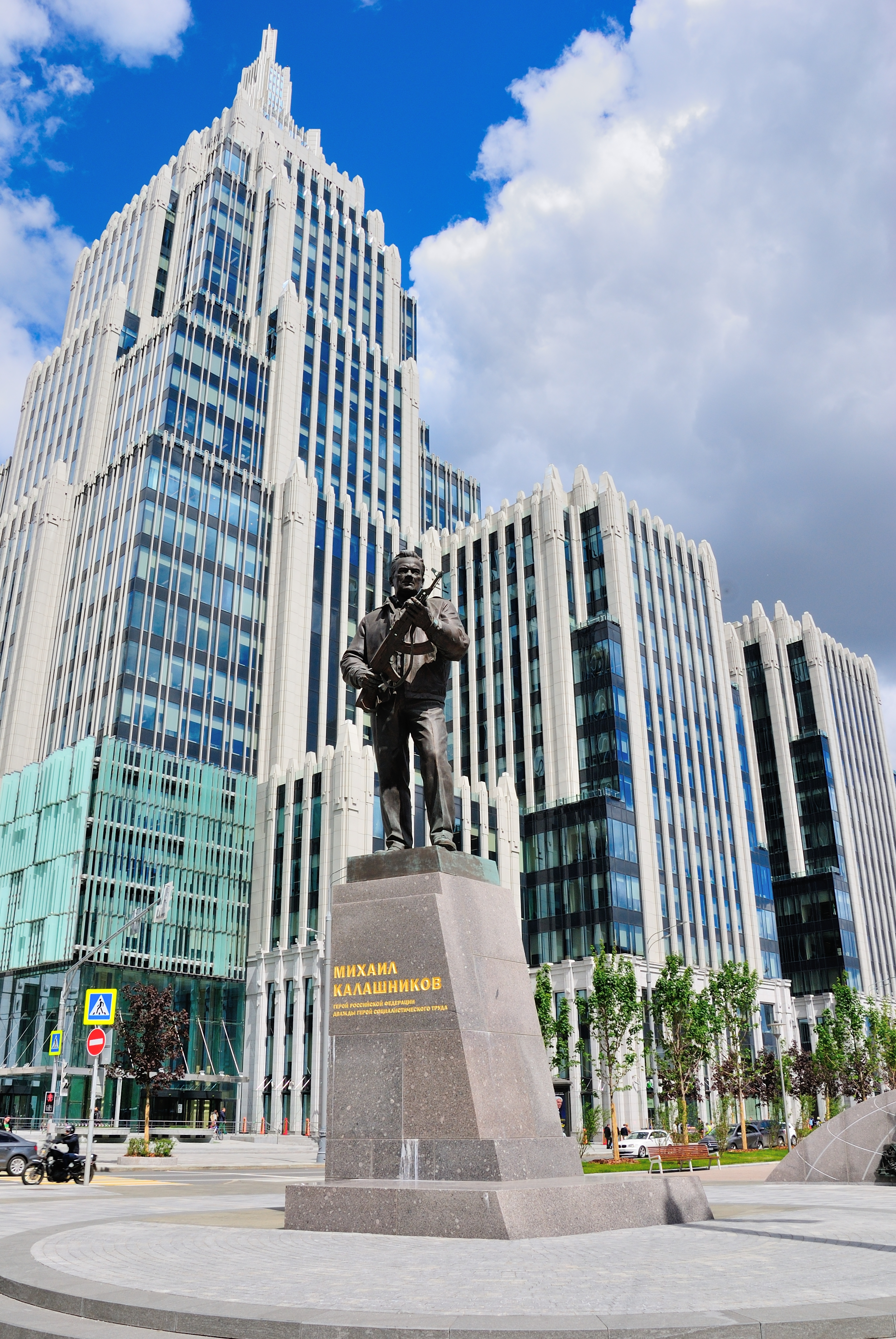History of the Famed AK-47
OutdoorHub Reporters 07.26.18

There is a story that during the space race NASA’s astronauts needed to make notes but found that pens did not work in zero gravity. So they spent a hefty budget to make a pressurized pen that would allow the ink to flow in space. The Russians gave their cosmonauts a pencil.
While apocryphal (hopefully) the story illustrates the Russian mindset towards problem resolution: keep it simple. This is no less true when looking at the need to arm conscripts with a reliable and durable firearm. The Russian solution remains the AK.
It is the most iconic assault rifle in the world. Besides the AR-15 it is perhaps the only other weapon non gun enthusiasts can correctly identify by name. For the last seventy years it has caused anxiety for military and gun control advocates alike. For others, it is the symbol of power against the elite and tyranny. The AK-47, and its many variants, make up an unusually large percentage of the known firearms in the world: if there are 875 million guns worldwide, it is estimated between 100-200 million are AK or AK derivatives.

Its designer, Mikhail Kalashnikov, is hailed as either a firearms genius or nothing more than a copycat. What cannot be debated, however, is the utility of his rifle is proven reliable under extreme conditions all over the world and does so with a shockingly high benefit to cost ratio: especially in Africa where – thanks to intensive Soviet investment in the region during the Cold War – AKs can be had for about $200 or less. This proves it is a “cheap” gun, but also that it is prolific and still used decades after its introduction.
The concept of an “assault rifle” without knowing what it was became a serious consideration for many nations going into World War II. While traditional minded military strategists held on to the bolt action service rifle, fresh minds looked to the potential fire superiority of a fully automatic rifle. Some full sized semi-automatic rifles were developed with success, but at full auto, recoil was too much to control. Experience showed that engagement distances were usually in the 300-500 yard/meter range at most – some asked why have a 1000 yard cartridge?
In 1940, the US developed the M1 Carbine, but stopped short of making a full auto version in the preparation for World War II. It was handy and serviceable, but the .30 Carbine round thought a bit anemic as a rifle caliber. For a true “assault” rifle, it was the Germans who first tackled the problem with any degree of serviceable success with the MP43 (machinepistole) which became the Sturmgewehr 44 (STG 44). For the cartridge, the Germans compromised with a new round: the 8mm Kurz or Short. It was 33mm in length instead of the 57mm standard 8mm Mauser rifle round.
The Sturmgewehr is often looked at as the inspiration, if not launching point, for Kalashnikov. Some have gone so far as to say the AK-47 is merely a Russian copy, something Kalashnikov vociferously denied. While he admitted to certainly have referenced the STG43, his own designs were started while recuperating from wounds he received at the Battle of Bryansk in October of 1941. He remained hospitalized until April 1942 and it was during this time he began designs for a new firearm of the Motherland. This was over a year before anyone on the Russian side saw the STG. Motivated by a desire to provide his comrades a reliable weapon, he first designed a submachinegun design. It was not accepted but it did get him noticed and invited to participate in a search for a new mid-sized rifle.
Curbing the discussion on German influence on Russian rifle design, it is proven that there was a German hand in Russian bullet design. In 1943 a captured STG was tested by the Soviet military and the shorter rifle round truly impressed them. The result was the m43 7.62×39 cartridge: a shortened version of the Russian 7.62×54 rimmed cartridge, without the cumbersome rim. The case was sloped to aid in feeding and operating under extreme conditions: the Russians prized reliability and function over everything else. The sloped cartridge is also the reason behind the noticeable curve of what became the iconic AK magazine.
In 1944 Mikhail presented a gas operated rifle chambered in the new 7.62×39 caliber that was admittedly influenced not by the STG but the US M1 Garand rifle. It too was not accepted when the decision was made to adopt a carbine designed by Sergei Simonov – the SKS.
With each loss, however, Kalashnikov further tweaked his design, making it simpler and easier for mass production. Among his changes was the omission of a non-reciprocating bolt charging handle in favor of a molded spur on the bolt itself and the safety/selector incorporated into the dust cover.
The Soviet military held another assault rifle competition in 1946 and this time, his design won. The prototype of 1946 was finalized in the Model of 1947, the Avtomat Kalashnikova model 1947 and was officially adopted by the Soviet military in 1949.

What makes the AK 47 noteworthy is the high reliability and low cost to manufacture. It has been described as a “bullet hose” where accuracy was a distant third consideration to reliability and rate of fire. It has also been described as “peasant proof:” meaning that virtually no maintenance is required to keep it functioning. Besides, it was cheap enough that if it did fall apart, it was simpler to replace than repair – though replacement parts are hardly highly technical.
The first production model, the Type 1, ran from 1949 to 1951 on stamped steel receivers. In 1951 the Type 2 went into production with a milled receiver until 1954. The Type 3 was another milled receiver variant from bar stock and remained in production until 1959. After 1959, the AKM, or Type 4 was adopted, using stamped steel receiver with use of pins, rivets and spot welds. The Type 4 became the most common variant to come from Russia. It is also the cheapest of the variants to produce while remaining remarkably reliable, impressively cheap and ultimately disposable. The perfect currency the Soviets could use for wooing client states once the productions process was streamlined.
The CIA’s first notification of the AK was not until some vague drawings were smuggled out of Russia in 1953. Based upon these, the West assumed it was merely a new variant of the PPSh sub machine gun. It was not until the Hungarian Revolution of 1956 that actual and public photographs surfaced of the AK. Still little was actually known of the weapon until it started turning up in the jungles of Vietnam. That was where the US military came into direct contact with the AK’s rugged durability that gave the least trained conscript enough firepower to potentially hold down a platoon.
Kalashnikov’s goal was less about giving a rifleman a long-range tool for accuracy than it was about making a conscript capable of holding his own on the modern battlefield and cheap enough to be readily available. As most combat engagements typically happen at 300 yards or less, the AK is capable of putting out enough rounds to statistically score a hit or at least encourage the enemy to stay down while others move forward.
The western powers were not the only ones studying the AK in Vietnam. In combat, what was the largest R&D environment, the Russians watched as the US adopted the small, hyper velocity .223 Remington/5.56 NATO. This inspired the USSR to adopt the 5.45×39. Designed to achieve faster velocities and more soft tissue damage, it was also lighter to carry. The AK was upgraded to accommodate it in the new AK74, adopted in that year.
Despite this, the 47 – and its clones – continued to soldier on in all parts of the world, especially third world hotspots where the AK’s durability, economy and simplicity proved ideal for arming fodder with minimal training. In the US, the semi-automatic variants are popular for the iconic value and durability. Further, the original caliber; the 7.62×39 is favored by a lot of enthusiasts for having a bit more knock down at close and medium ranges than the .223/5.56mm.
Was it successful? Seven decades of continued use would suggest yes. As would its adoption and use, in licensed and less legitimate forms, by a great many powers throughout the world. Its prolificity is a testament to its simplicity and economy, but also its reliability: even the cheapest guns are not long invested in if they do not perform as required.
Kalashnikov experienced deprivations in those early days on the Eastern Front when many of his comrades did not have any weapon at all. While the Germans may have had technological advances, they were hindered by technological complications while fighting for battlefield superiority. The AK is undeniably Russian in resolving the issues within any conflict: with simplicity and effectiveness.

